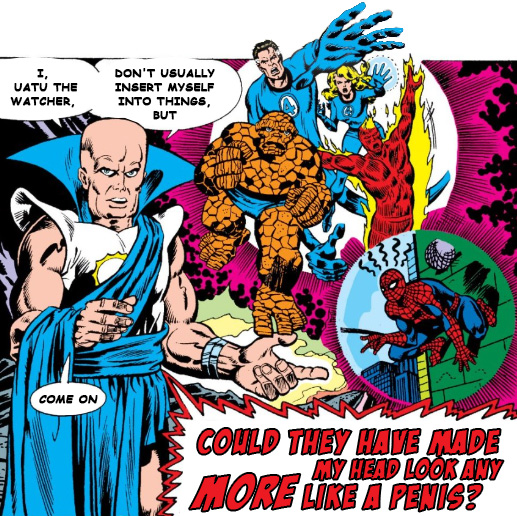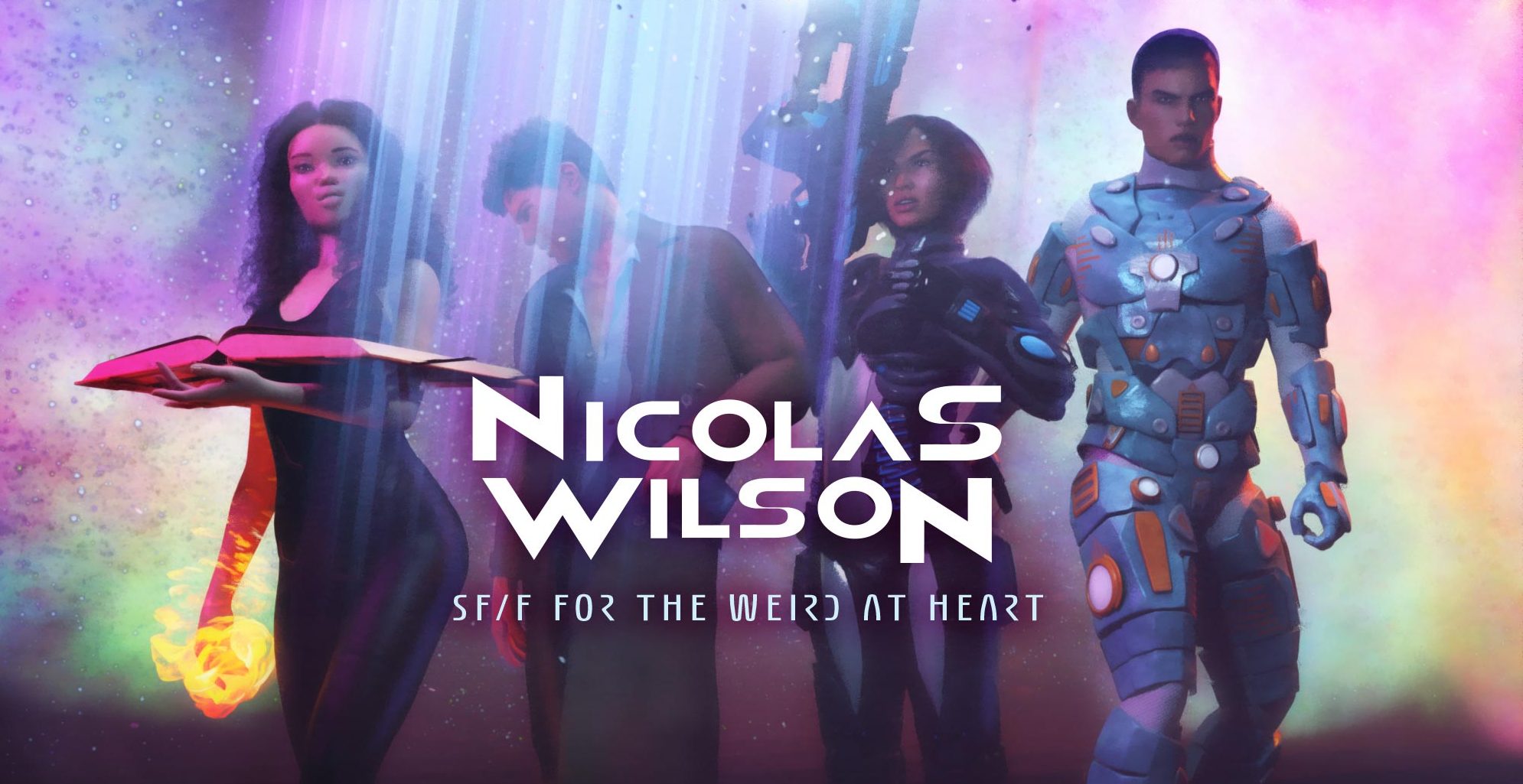
If you’re dipping a toe into the What If comics the first thing you’re going to realize is that it’s an anthology series. That means some of the stories will be written by seasoned professionals, like Gerry Conway, who know how to spin a good yarn, or at least a competent one. And some won’t, or might be done by otherwise good writers who nevertheless turn in something uninspired, or chase what could have been an interesting idea down a dull, pointless alley.
I’ve always loved the idea of What Ifs (and Elseworlds, for you DC folk), taking familiar heroes and putting them in unfamiliar, even strange circumstances to see which parts of their status quo were circumstantial and which elements were core to who they are. This can make a lot of these stories really samey; they often go to extreme lengths to get the characters back to as close to their status quo as possible, as if to disprove the entire thesis behind the books (Elseworlds feel much more guilty of this, by the way). But typically, you hope for something that tickles the imagination, and offers places for you to build out your own idea of how these hypotheticals play out; very occasionally you get a story that makes space for that but is also moving and engaging in its own right.
I grabbed some of the more recent issues (from the 2018 run, read oldest to newest), because they’re free with Marvel Comics Unlimited. I also grabbed the first collection of What If Classic, which is free on Comixology Unlimited. The Classic issues are older, which means a much higher ratio of text to picture; they’ll be longer, denser reads, with more complicated stories. They’ll also feel a little slower, if you’ve done most of your reading on more recent books.
The first issue in the Classic collection, is What if Spider-Man joined the Fantastic Four. These days it seems like a silly thing; after all, he’s spent time as a member of at least two different fantastic teams since. But this was back in his raw days, where he was defined as much by his status as a down-on-his-luck loner as by his quips. So sticking him on the Fantastic Four was an interesting idea, and it even plays with some interesting ideas- though how intentionally really isn’t a given.
The Invisible Girl is the one who keeps getting shunted to the side. Sure, the team renames themselves the Fantastic Five, but almost immediately after they run into convoluted reasons why only four of them can go anyplace at a time, leaving her the odd woman out. It’s possible these were some subversive gender politics, given the times (I guess by ’77 it may not have been all that subversive, compared to sixteen years earlier). But Sue doesn’t take it lying down. When given a chance to run off with Namor, she takes it. Reed and Sue stop being a couple, because she realized he didn’t need her the way she wanted him to.
But before we get to that sucker-punch of a close, we get to see a Spider-Man who doesn’t have to struggle anymore; with Reed vouching for him with the government, he’s cleared of any suspicion, and even J. Jonah Jameson embraces him. And Reed’s able to put him on salary, so he’s not constantly scraping to get by. He finally belongs somewhere, has a family (no offense to May or MJ). You can see why they had to swerve left- and make it Reed who gets the heartbreaker of an ending. Oh yeah, and the Uatu in this book is bonkers looking.
The second issue, covering what would have happened if Bruce Banner had retained his mind even when in the body of the Hulk, is weirder stuff; it still follows the same, almost wish-fulfillment. Banner marries Betty, and ends up working with Mr. Fantastic and Professor X; in this one, though, Banner disrupts the expected flow, and because of his intellect causes the Fantastic Four to disband, and prevents the formation of either the Avengers or the X-Men, leading to the bizarre necessity to fuse Banner and Xavier and Richards to create the X-Man to fight Galactus. It’s weird, even by comics standards. They stalemate him long enough for him to wander off in search of an easier snack, but the effort cost them their powers, which apparently also prevents them from combining to be a 12 foot gold guy again.
That odd note is a terrible place to segue, but it was already one more Classic story than I’d budgeted time to read (hence my lateness posting here). The rest of the books I read are more recent, from 2018, also collected in With Great Power. Certainly the art is prettier, even if the batting average is definitely lower.
Sadly, the first up, .Exe Men. is one of the uninspired. It’s the X-Men as a Matrix rip-off, but without anything interesting, different, or subversive in the world-building. In fact… even that makes it sound better than it was. It was the Matrix sequels with a coat of X-Men paint on it, but for some reason only Cable and Domino show up. Since it was the first, chronologically, of the new books, I despaired having more to read.
So I wasn’t prepared for Gerry Conway’s Spider-Man story. It’s short, a little too quick, honestly, but Flash Thompson gets bit by the spider and gets the Spider powers. If you’re of a mind to read it, I’d suggest you do so, before reading this synopsis: but it packs a punch when Peter’s aunt’s treatment is impacted by Doc Ock stealing an isotope, leading Peter to track down Flash and demand his help… only Flash is a jerk, and reacts like a jerk would… punching Peter. Only this Peter is a regular human nerd, and a punch from Spider-Man for somebody like him is fatal. Flash realizes what he’s done, and to make up for it, tracks down the isotop to save May, before turning himself in. Now… the story could have done a slightly better job emphasizing that what Flash lacked was the life lesson that with great power comes great responsibility, and how that lack of care had brought him to this low ebb… but Flash realizing he isn’t the man he wants to be, and the only way to try to be is to take responsibility for who he has been, and seeing Spider-Man led away in chains… it’s an improvement, to say the least, from that last story.
The next was What if Spider-Man became the Punisher (the cover said “Peter Parker” but it’s not just a normal nerd usurping Frank, it’s Spider-Man deciding with great power must come a great arsenal). This one’s an odd duck. It doesn’t really justify its premise- it’s not that he internalized years of bullying or ran into a Frank Castle still haunted by his days in Vietnam- he just decides, “Well, I could be responsible, but guuuuuns.” They had a neat idea, or maybe costume design, and didn’t put in the elbow grease to make it make sense. Ignoring that, the execution is okay… I mean, the Punishing Spider (I think this is the closest to a name they settled on) does quit eventually, having narrowly saved Gwen Stacy from the Green Goblin’s bridge tossing (so the story does get some points for avoiding that fridging), only… a shot up Frank Castle stumbles into the alley where Spidey tossed his gear, finding the skull… so aside from some B list Spider-Man villains getting gunned down, pretty much return to the status quo.
Fourth was the Ghost Rider issue. This one takes the weird instance of KISS putting drops of their blood into some comics and uses it for a tongue in cheek Satanic Panic story set in the Marvel offices, but also Ghost Rider is an intern there. I’ll let you know if I ever figure out what the hell is happening in the story… but don’t hold your breath. I know it didn’t quite get whacky enough to be fun like it so clearly wanted to be.
Fifth is probably the third best story (damningly faint praise; at one point it was second…), What If Thor was raised by Frost Giants. Odin loses his war against the Frost Giants, and rather than he and Freya raising Thor and Loki, Laufey does. Laufey takes a shine to Thor, who is strong and brave, and takes to the Frost Giant’s might makes right philosophy. Loki’s guile is unappreciated there, and he finds solace in the friendship of the imprisoned Freya. So what we get, instead, is a warped version of the story we know, with Thor and Loki coming to blows, and Freya perishing in the fighting when she tries to save Loki. It’s a tragic tale, one that presents both characters with interesting new choices and lives to live.
The Sixth of the run was What if Magik became the Sorcerer Supreme, and I’m so glad this run ended on this one, because it’s special. Dr. Strange is a character who I think always functions best as mysterious, aloof, even a little unknowable. That’s why his character works better in Thor Ragnarok and the Avengers movies than in his own movie. But here he rescues, cares for and trains Magik, whose mutant abilities finally let her escape the demonic Belasco who kidnapped her to become his apprentice. Magik and Strange develop a tender, familial relationship, until confronted (literally) by her demon. In twenty-some pages it develops character relationships and tells a story about healing from trauma that actually has some weight to it. This one I would recommend with absolutely no caveats at all, except maybe a trigger warning for childhood abuse (mentioned, not shown). I think what I’ve always loved about the What If idea is that at its best, it uses the differences in its concept to show the core of what makes its characters tick. Doctor Strange is an odd guy who helps weird people with peculiar problems, but in his own, odd way, really cares. Illyana (Magik) is a traumatized girl trying to get the hell away from all of the things that hurt her; more than anything she just wants to be a normal girl who didn’t grow up in Hell (Limbo, technically). The story, like the best of stories, is about helping someone find the peace they so desperately need.
